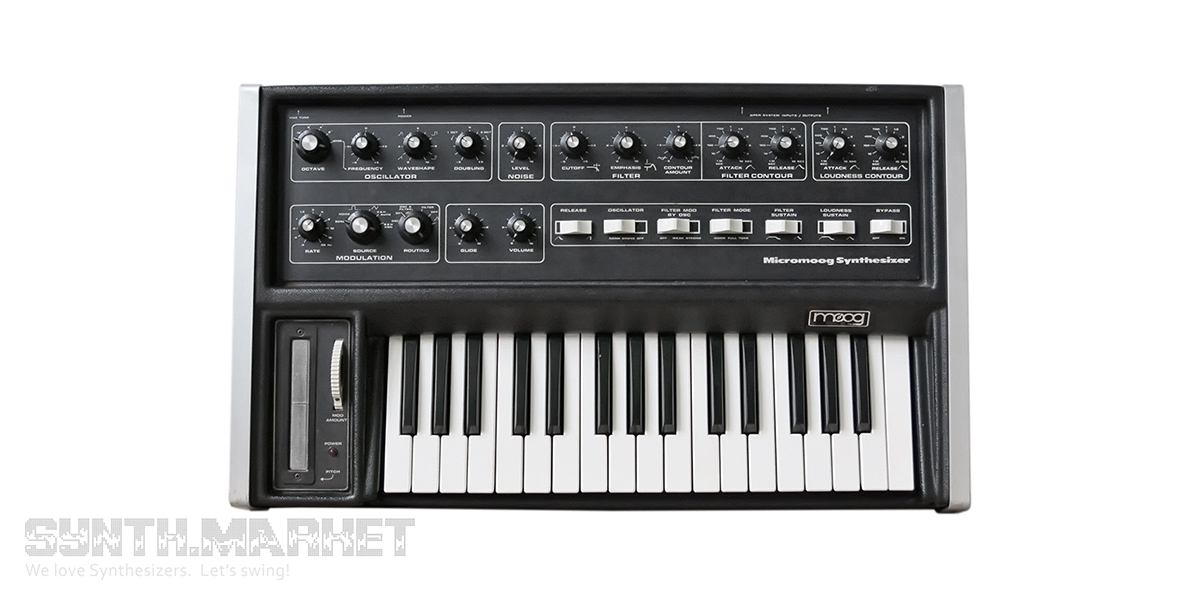Micromoog was the company’s attempt to make a small affordable though full-featured synthesizer.
The instrument is built on the basis of only one VCO, which can be transposed within five octaves. The basic sawtooth wave can be converted into a square wave or into a punchy “heartbeat” signal. The "doubling" control mixes the built-in octave signal with the VCO signal.
VCF has a classic Moog structure with cutoff frequency, resonance and depth control of the envelope generator.
The synthesizer features two blocks of the envelope generator: Filter contour - directed to control VCF, Loudness contour (on some models "articulator") - VCA. For each of them, the attack and release time is adjustable, as well as the sustain which can be switched off.
The modulation section allows you to select the source and send it to VCO, VCO and VCF or VCF only. A noise generator, an LFO, or a sample&hold circuit can be selected as the source.
The LFO produces a triangular and rectangular wave in the range within 0.3 to 30 Hz.
A special feature of the synthesizer is the use of a ribbon controller instead of a usual pitch bend wheel.
Micromoog has an input for an external audio signal that can be processed in the VCA and VCF sections.
Among the users of Micromoog Chik Corea, Kraftwerk, Apollo 440 can be noted.












